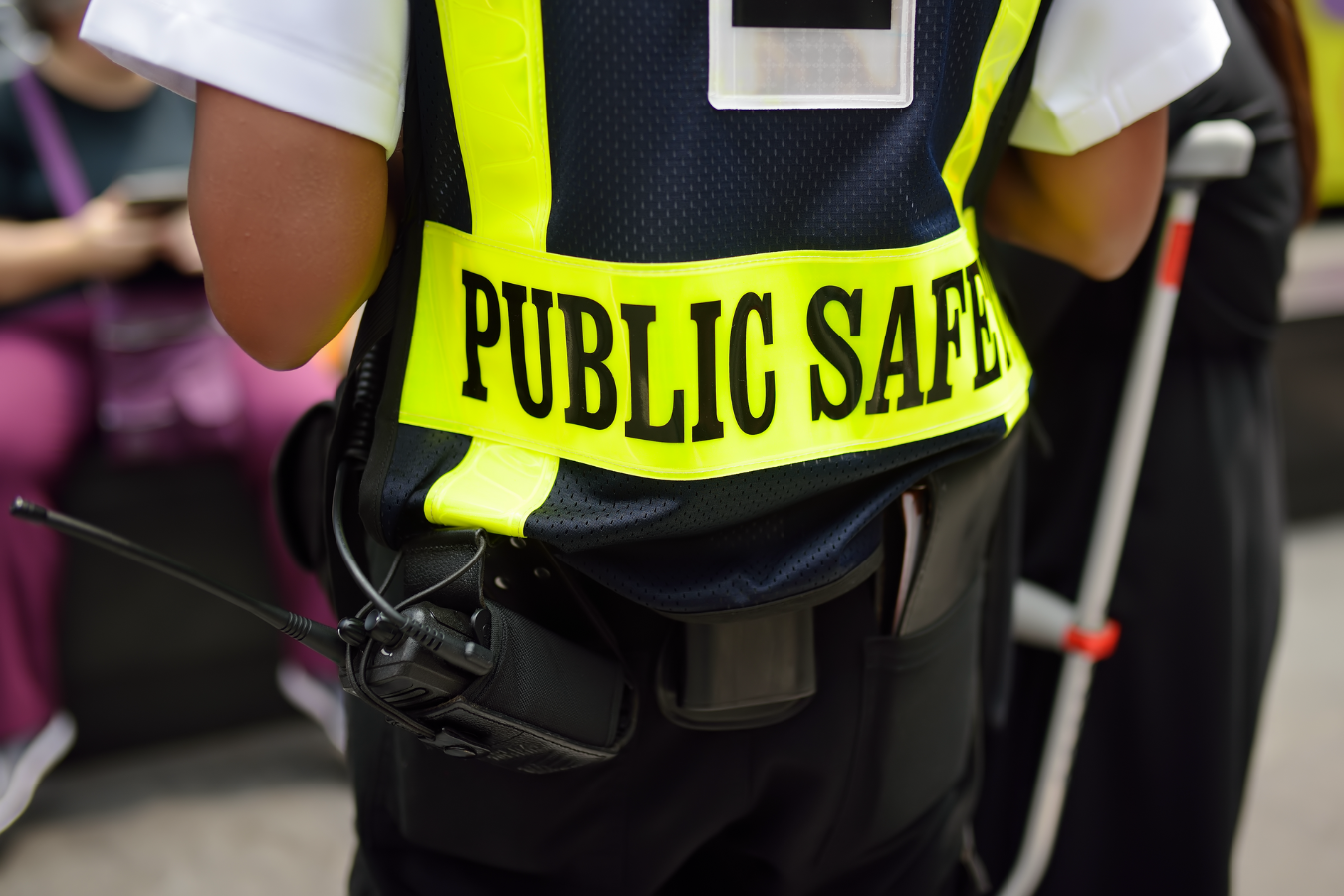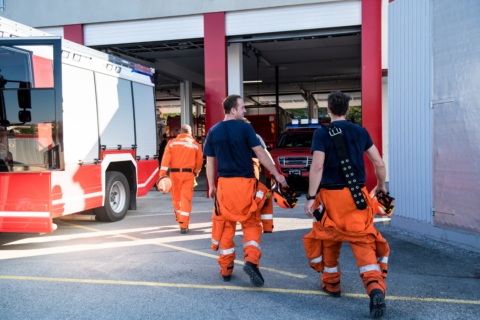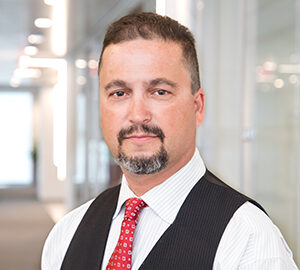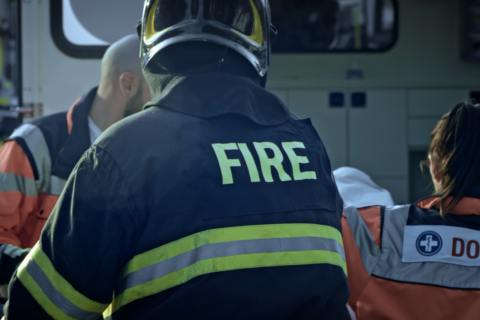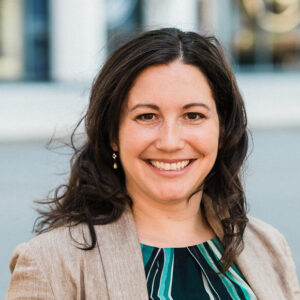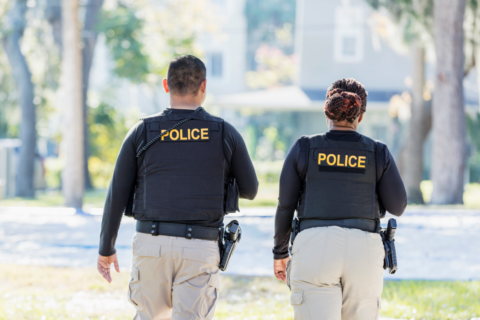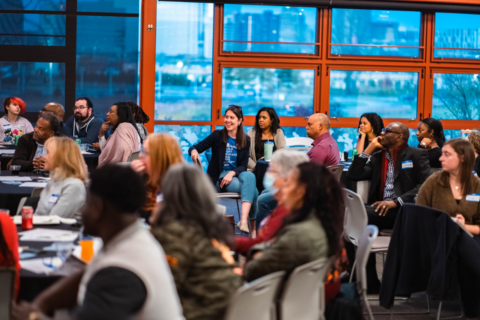By Tim Shriver, Integrated Public Safety Lead
“For so long, public safety and public health have been treated separately, operating in silos. We must start figuring out how to use both to find solutions for our cities,” says Mariela Ruiz-Angel, Director of Albuquerque Community Safety. “We’ve done it before. During COVID, all our first responders joined forces, from police and fire rescue to doctors, nurses, and crisis response teams. We can learn from this experience to tackle the challenges of crime, homelessness, and mental health.”
Albuquerque Community Safety (ACS) launched in 2021 as the first cabinet-level public safety department of its kind. ACS collaborates with Albuquerque Police (APD) and Albuquerque Fire Rescue (AFR), as well as local hospitals and community-based organizations to support people in crisis. Their goal is to deliver the right response at the right time and to improve access to a broad range of social services by responding to non-violent, non-medical 911 calls with specially trained first responders.
And it’s working. Over two years of operation, ACS has now taken 43,000 calls, diverting nearly 5% of 911 calls from APD, reducing the burden on APD and AFR. Total call volume is up 30% compared to 2022. For 15% of calls, ACS facilitates a warm handoff to a service provider.
ACS and the city’s collaborative approach to public safety and public health represents a growing trend across the country. Cities are recognizing that the challenges they face require expertise and information from across government agencies and community partners.
Ruiz-Angel learned early in the process of launching ACS that data is key, both tracking internal data and effectively sharing data across the city: “We need data from both the public safety and public health systems to understand what’s working and what’s not.”
With comprehensive data, a city can ask and answer questions like:
- Is an individual who received crisis support less likely to call 911, commit a crime, or return to the emergency room in the future?
- How do we use both law enforcement and public health strategies to prevent further fentanyl deaths?
- What kinds of services drive long-term change for individuals regularly cycling through jails and hospitals?
“No one department has all the data. But together, we can tackle these challenges,” said Ruiz-Angel.
Integrated Public Safety
We see this trend of collaboration and interagency data sharing making promising advances across public safety.
Public safety has traditionally been thought of as the work of police, fire, and offices of emergency management (OEMs), each with critical but siloed responsibilities. But increasingly, these departments are expected to collaborate and share data with health and social services, code enforcement, public works, housing, and burgeoning civilian-led public safety departments like ACS.
The results are a broader set of expertise and resources with an increased ability for each department to focus on what they do best.
“We know that we can’t arrest our way out of the challenges facing us. We know that the best crime reduction tools the city has are jobs, education, and housing,” says Atlanta Police Assistant Chief Carven Tyus, explaining how this trend is reshaping policing. “A collaborative approach to policing looks like seeking ways to divert an individual to services before resorting to incarceration. It looks like gathering input and feedback from residents through our city and community partners. And it looks like sharing information across the city ecosystem to make sure we’re doing everything we can to assure a safe and thriving city.”
Increasing levels of crime among youth in some cities provide a telling example. With the right data and the right collaborators, city leaders can ask questions like:
- Are there appropriate and sufficiently funded after-school programs at high schools and middle schools in high-crime neighborhoods?
- Have we done our best to train young people in non-violent conflict resolution?
- Are these youth experiencing addiction, homelessness, or poverty?
- Is there sufficient greenspace for sports and other community activities?
Accurate, actionable answers to these kinds of questions are only found with integrated data from multiple agencies. And finding the right intervention for a person or moment can only succeed when there are diverse options available.
Integrated Criminal Justice
The same principle is true of criminal justice. A resident’s interaction with the criminal justice system encompasses everything from the police, courts, and jails to parole officers and finding gainful employment upon release.
“The goal must be nothing less than a continuous and robust understanding of what is happening, when, and where, from the beginning of the judicial process to the end,” says Vanetta M. Pledger, Chief Information Officer for the City of Alexandria, VA. “We need to start by asking questions like ‘What warrants are being issued? What crimes are being committed? Who is coming in and out of jail, and why? What resources do people need to prevent them from recidivating? How do we ensure courtroom processes are fair and unbiased?’ The answers to those questions are crucial to having a more effective and fair justice system.”
As Ms. Pledger notes, these, too, are answerable questions.
Securely and safely sharing data between all the departments involved in criminal justice is the best way to ensure residents have fair, accurate, and efficient interactions with the criminal justice system. It can also help deter interactions with the criminal justice system to begin with.
Like public safety, more broadly, deterrence may come in the form of education, affordable housing, access to food or employment, or drug addiction services.
An integrated public safety and justice ecosystem gives decision-makers a better understanding of what’s happening in their city and how the government can help. The more informed decision makers are, the better decisions they can make in service of their residents – proactively and reactively.
No one city is alike, and answers to these kinds of questions will differ city to city. But by understanding the conditions that are present and the resources that are available, cities can creatively drive interventions and solutions like never before.
